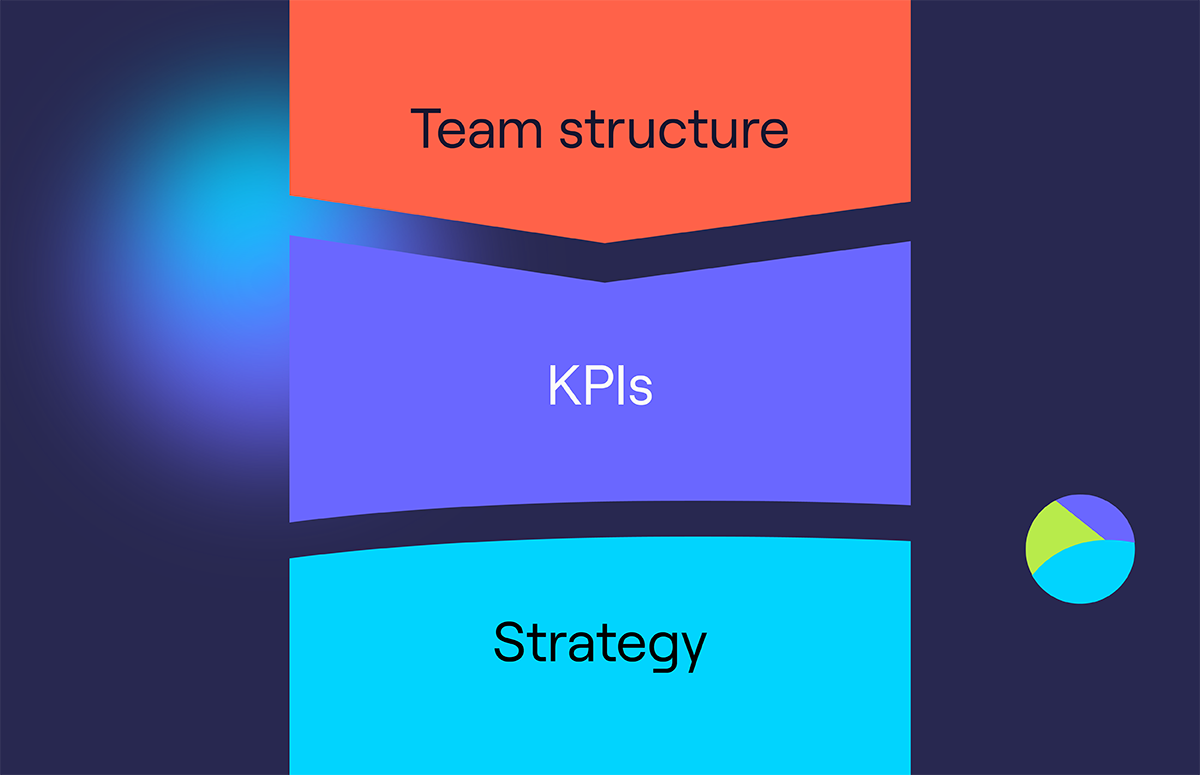How RevOps Automation Can Transform Your Sales Pipeline
How RevOps automation transforms sales:
RevOps (revenue operations) has a single important focus:
Optimising the company’s revenue engine.
We do that by introducing initiatives that align the revenue teams (sales, marketing, and customer success), optimising processes across the funnel, improving data management and use cases, and automating the heck out of our workflows.
In this article, we’re going to zoom in on that last part: RevOps automation.
We’ll spare you the lengthy definitions. You know what RevOps is and what automation does. Let’s dive straight into seven practical and tactical ways to automate revenue operations to transform your sales pipeline and unlock more growth opportunities.
1. Maintains data hygiene best practices
Quality data is the foundation of a good RevOps strategy.
👉 Psst, now is a good time to point out that Cognism helps RevOps teams build a better pipeline & plan resources effectively.
At a fundamental level, it’s about saving time by cutting out the needless hunting down of data points like customer phone numbers and emails.
Incomplete or incorrect sales data leads reps to waste hours each week, taking them out of “the zone” and ultimately reducing their time to spend on activities that move the needle forward.
It’s also a major problem for higher-level data-driven decision-making.
Incomplete or out-of-date data makes it harder to make meaningful, accurate decisions. It can also negatively impact territory planning, budgeting, forecasting, and other strategic tasks.
So, step one is to introduce an automated solution for keeping sales data healthy, accurate, and updated.
Cognism’s B2B data enrichment is a simple and powerful solution here. It’s got the broadest and most accurate data set in the game across Europe. And there’s Diamond Data®, our exclusive data set of phone-verified numbers.
There are two ways you can use automation to maintain good-quality data.
The first is an enrichment file upload process. Here, you can upload a CSV to Cognism, culling inaccurate data points and replacing them with correct information.
The second practice is to implement enrichment through our API. As soon as a new lead hits your CRM, Cognism enriches the data you’ve captured by filling in any gaps, such as a missing email address. This helps prevent sales reps from chasing down unsuitable leads or wasting time finding prospect contact info.

2. Powers personalised outreach
We all know that today’s buyers demand personalised experiences.
In fact, personalisation has been an important factor in influencing buyers for a while; we just haven’t had the tools to execute the idea effectively.
But now we do.
Bombora’s intent data (available through Cognism) measures which of your target accounts are actively researching terms related to your chosen topics. It indicates when said target accounts are consuming content related to your brand or solution, enabling you to step in and offer your services at the perfect time.
This gives RevOps teams real-time insight into:
- Which prospects are hot?
- What factors do buyers care about?
- What competitors they’re considering?
Revenue teams can use it to prioritise outreach and shift messaging angles to incorporate personalised insights.
We can then feed these insights into advertising automation tools like Influ2 or RollWorks, pivoting our creatives based on contact-level intent.
For example:
You might begin by targeting price-based ads at a B2B decision-maker and then (after identifying that they’ve been consuming content on a competitor’s website) switch to a competitor comparison angle
3. Improves tech stack compatibility
A key goal for many RevOps teams is to deconstruct the siloes that sales, marketing, and CS have built around themselves, encouraging a more unified approach to revenue acquisition.
While many cultural and procedural changes must be made to achieve this goal, one of the most fundamental improvements is improving compatibility across your revenue tech stack.
Data access is a key focus point here.
Save for data privacy concerns - many of which can be addressed through role-based and individualised permissions - there should be no barrier to accessing data-based insights from other teams.
Take deal data, for instance, which includes recordings and notes on customer interactions, activity logs, and metrics like time in the pipeline. This information is valuable not only to sales and sales leadership but also to the customer success team.
As sales hand over to CS, the CSM should have intimate knowledge of that buyer’s concerns, motivations, and previous attempts at problem resolution. These are pertinent not only to closing the deal but also to providing personalised, relevant support post-sale.
Marketing, too, can analyse metrics across deals, such as competitors noted or objections raised, which they can then use to adjust targeting parameters or influence messaging experimentation.
The solution here is to automate data syncing across systems through deep integrations between software tools and using a centralised data repository (the CRM, for example). Use native integrations where possible, but be open to leveraging tools like Zapier to build custom connections to improve compatibility.
Additionally, as your RevOps processes progress and you look to expand your technology stack, make connectivity and compatibility a priority. Favour tools that plug and play with your existing system.
4. Drives efficiency with lead scoring and routing
Just as important as being skilled in how to go after target accounts is knowing when to initiate conversations.
Automated lead scoring and routing systems are key here, helping sales teams prioritise their efforts and streamlining handoffs from marketing to sales.
Here, you build a model to score leads based on criteria such as:
- Intent data.
- Firmographic data.
- Prospect behavioural data.
- Customer engagement with your company.
- Lead source.
Scoring is weighted based on the importance of the factor being considered. For example:
Firmographic data like company size might be important (bigger deals are generally favourable), but behavioural data says more about the prospect’s readiness to buy.
You can automate all of this.
Signals such as engagement with sales emails or marketing ads, as well as third-party data points from sources like Bombora, can be fed into a lead scoring system that automatically tallies and weights inputs and provides an overall lead score.
Data quality plays an important role here, too. Missing lead values in your database negatively impacts your ability to score leads accurately, making an automated data enrichment solution an important investment.
You can automate lead routing too, improving your speed to lead and allowing you to use your resources more efficiently.
For example:
You might use a round-robin (even distribution) routing strategy for normal leads, but create an override rule for high-intent leads, routing them to the next available rep.
5. Maximises customer onboarding
The best RevOps leaders aren’t just concerned with acquiring new customers - they’re also obsessed with retention.
Given the clear, strong link between effective onboarding sequences, retention rates, and perceived value, this is clearly an area you should examine!
You can improve the quality and usefulness of your onboarding process by:
- Building out self-service resources such as video walkthroughs and setup guides.
- Integrating personalised implementation and guidance calls with CSMs.
- Designing an interactive tutorial within the platform itself (for SaaS brands).
Timing is critical here, and that’s where automation comes in.
Automate your onboarding sequences to provide relevant, timely experiences that capture customer feedback and meet them at their level.
Many CS leaders design phased onboarding plans. This is a good move in principle, but there’s little point in introducing a customer to step four if they still haven’t completed step one.
Instead, you can use automation to design dynamic onboarding sequences that adapt to the customer’s current adoption and onboarding journey. Your goal is to create personalised, seamless customer experiences!
For example:
Completing the first step (e.g., customising the pipeline stages in a CRM tool) can trigger an automated email sharing a video guide for stage two (e.g., integrating with their data provider).
6. Enhances forecasting and reporting
RevOps leaders can also use automation to improve how they produce reports and analyse the impact of their revenue strategy.
Automated report generation is an easy win. For example:
Many of the tools in your RevOps tech stack will allow you to set up an automated report by email every Monday, providing an overview of your key metrics.
You can take that further and use a tool like Tableau or Coupler.io to aggregate data from across your revenue stack and produce a holistic, automated report.
Setting up automated notifications for important changes in metrics is another smart move. For example, you can receive alerts automatically when:
- Your marketing team is forecasted to exceed its budget by a given percentage.
- You hit a critical pipeline or revenue goal.
- There is an important change that should inform targeting or messaging strategies (such as a competitor launching a disruptive new feature).
7. Identifies churn signals early
Finally, you’ll want to consider reducing churn and improving customer retention.
We can use churn intent data to great effect here.
The same intent data you used to close the deal originally (by getting insight into the prospect’s browsing behaviours on other sites) can be an important churn signal. If a customer is looking at a competitor’s website, especially when they have a contract renewal company up, this is an important warning sign.
RevOps leaders can set up automated alerts to CSMs when these warning signs are recognised, leveraging AI solutions that can more effectively interpret buyer behaviour and determine the most urgent churn signals.
Platforms like Gainsight and ChurnZero can support this process and integrate with intent data solutions.
RevOps automation relies on quality data
There are several powerful ways today’s RevOps leaders can use automation to unlock pipeline and revenue growth.
From developing responsive marketing campaigns and designing automated forecasts to using AI to identify customer churn signals, there’s one common denominator that sets the foundation for success:
High-quality B2B data.
Cognism has the best European data on the market, with phone-verified numbers and unrestricted access to person and company-level data.
With Cognism, you can set up automated data enrichment protocols to keep your database constantly updated. Plus, leverage insightful intent and signal data to personalise outreach campaigns and quickly build targeted lists with AI to fuel territory planning and speed up sales cycles.
And, we integrate with many of the tools you’re already using - like Salesforce and Outreach - so you can tear down siloes and build an integrated revenue tech stack, powered by quality data.
Book a demo today to discover how Cognism will transform your revenue operations strategy.
/Lead%20routing%20tools/lead-routing-tools-resource-card.webp)

